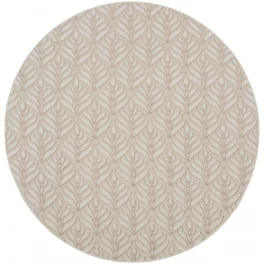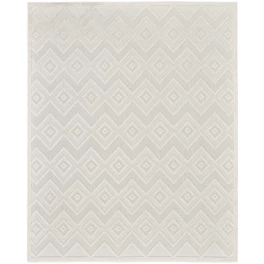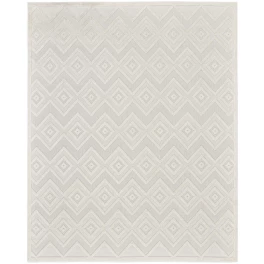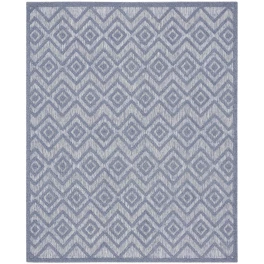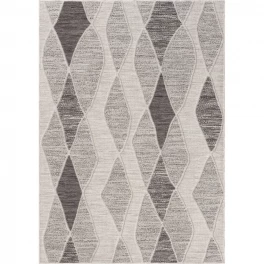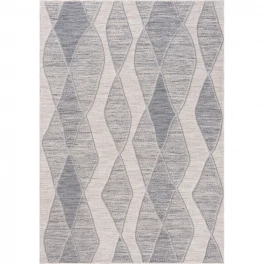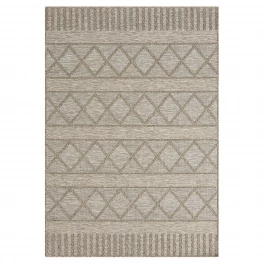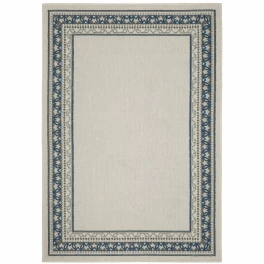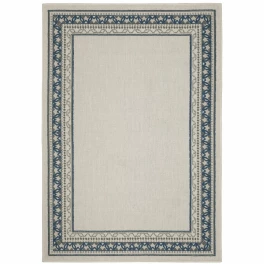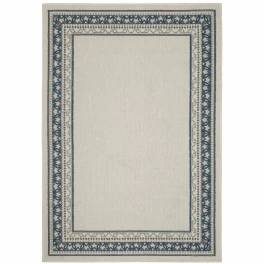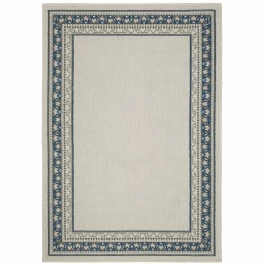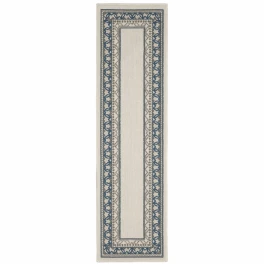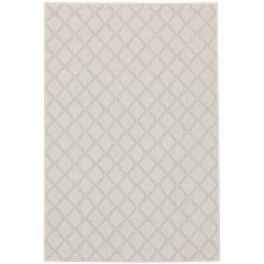Searching for the perfect rug or carpet can be daunting simply because of the amount of options available. In this guide, we explore some of the pros and cons of several popular rug materials. We’ll look at softness, maintenance, durability, and more, to see what fiber best fits your needs and your home’s style.
Wool Rugs
Wool is a great carpet choice for many scenarios. Highly durable and comfy, wool rugs that are properly cared for can last decades. This also means that many wool rugs come at a higher price point. These rugs keep their shape and plushness for a very long time. Easy to clean of dirt and debris, wool is also resistant to oil stains, unlike most other carpet materials. Wool rugs are very soft and can insulate your space as they retain heat well.
Due to wool being highly absorbent, these rugs can retain a lot of moisture if kept in a moist environment, potentially resulting in mold or mildew. This means they should not be kept in areas that can get wet, like in a bathroom or basement. This absorbency also works against stain resistance. Stains from spills can become hard to remove if not treated immediately, as the wool will absorb the liquid.

Photo by Farel Rivalent on Shutterstock
Wool Pros:
- Long lasting when properly cared for
- Retain heat very well
- Highly durable vs. foot traffic
- Incredibly soft compared to most other carpets
- Resists against oil stains
Wool Cons:
- Will fade if left in direct sunlight
- Will absorb spills if they sit too long, leaving lingering stains/odors
- Shouldn't be kept in moist/high humidity environments
- Potentially hefty price tag
Jute Rugs
Jute is a long vegetable-fiber that is dried and spun into coarse strands. These strands make up the carpet and can give a room a very natural and earthy feel. Also known as hessian, jute strands are commonly used to make burlap fabric. Often used as an accent piece, jute rugs add a different layer of texture and can be placed in many different places in the home. These rugs are naturally brown in color and can be cleaned easily, but can be prone to staining.

Photo by Photographee.eu on Shutterstock
Jute doesn’t stand up to high traffic very well and is better suited to bedrooms and low traffic areas. Best relegated to dry areas - jute rugs are less likely to trap allergens because of their woven construction. It is also much softer than sisal, so bedrooms and areas where you travel barefoot are best, that way your feet can appreciate the soft feel!
Jute Pros:
- Affordable and natural
- Soft on the feet
- Eco-friendly
- Versatile and can be incorporated with many different styles
Jute Cons:
- Prone to staining
- Won't hold up to high foot traffic
- No heat retention
- Prone to shedding, mold & mildew
Sisal Rugs
Sisal is a natural fiber derived from the long green leaves of the agave plant. Very resilient in nature, the raw and coarser fibers of the plant are used in making ropes or twine. Sisal is sustainable, 100% biodegradable and very strong. These rugs can be placed almost anywhere in the home due to their durability and unlike some other carpets, sisal doesn’t compress over time and won’t show wear patterns.
Like jute, sisal rugs add a unique, varied, and textured look to a space. Sisal has a mildly neutral and natural look, being beige, tan, or a creamy white color tone due to the plant fibers. Another benefit to sisal is that it is anti-static, making them a good fit in home offices. Sisal is dense, so these carpets absorb sound better than other types of rugs. While easy to clean of dirt and dust, more care is required for stains or dirt ingrained in the rug. Sisal is highly absorbent and shouldn’t be cleaned with water. Watermarks can appear on the surface if the rug is cleaned with water or is exposed to spills.

Photo by Shamar Whyte on Shutterstock
Luckily, debris doesn’t cling to the fibers so vacuuming is the best option. Special cleaning solutions are also available to remove any extra stubborn stains. From a comfort standpoint, sisal isn’t the softest material and can be uncomfortable to sit on or for kids to play on. These rugs are best in areas that see a lot of indoor-outdoor foot traffic, like a hallway or entryway; while areas where being barefoot is more common, like the bedroom or where the kids play, should be avoided.
Sisal Pros:
- Eco-friendly / biodegradable
- Durable and long lasting
- Easy to clean of dust and dirt
- Unique looking weaves and textures due to construction
Sisal Cons:
- Not the most comfortable option
- Shouldn't be exposed to water
- Can be tricky to remove stains
Cotton Rugs
Cotton rugs are of a medium durability best suited for medium-to-low traffic areas of the home. Usually braided or flat weave, these rugs are much softer than some other natural material options like jute and sisal. While soft, they aren’t quite as plush as wool carpets. They are typically much less expensive than wool options but not as long lasting. Cotton rugs are very easy to clean and most are machine washable, allowing for even easier cleaning. Using a rug pad under the carpet will help keep the rug safe from tearing.
Cotton Pros:
- Easy to clean - machine washable
- Affordable option
- Many color and style options available
Cotton Cons:
- Can trap dust if not vacuumed often
- Will wear if placed in high traffic areas
- Avoid contact with direct sunlight

Photo by Photographee.eu on Shutterstock
Synthetic (blend) Rugs
Synthetic rugs feature materials from nylon to polypropylene (olefin), to polyester to rayon. Some styles are blends of various materials, but the 3 most popular synthetic rug types are nylon, polyester and olefin. While usually looking fairly similar to one another, all the available synthetic options do have various differences between them, some being better universal choices in the home than others.
Nylon carpets are the most expensive of the synthetics. They are highly resilient to foot traffic and don’t show signs of wearing as easily as other materials. Nylon can be easily cleaned with regular vacuuming, though it is also a good idea to steam clean it at least twice a year to ensure longevity. Nylon also resists denting from furniture and is treated to protect against stains - though it is less stain resistant than polyester.
Nylon Pros:
- Highly durable
- Easy to clean when soiled
- Resistant to wear and tear
Nylon Cons:
- Not as stain resistant compared to other synthetics
- Most expensive synthetic option

Photo by adam Asar on Alamy
Polyester carpets are a much cheaper option. However, these carpets wear quicker than nylon but have a stronger, natural stain repellant. Polyester is typically softer than nylon as well. Polyester can be prone to pilling or shedding and doesn’t repel oil based stains.
Polyester Pros:
- Affordable option for covering large spaces
- Naturally stain repellent
- Often made with recycled materials
Polyester Cons:
- Shows signs of wear tear sooner than other synthetics
- Can stain due to oils

Photo by BondRocketImages on Shutterstock
Olefin rugs are another less expensive option. This material doesn’t last as long as other fibers but works well in damp environments and has very good stain resistance. These carpets won’t absorb liquids, however they do not defend against any oils, making them a bad choice for dining rooms or kitchens. This hydrophobic nature makes olefin rugs best suited for areas that do encounter water, like outdoor spaces or basements. They are not prone to mildew or mold and are fade-resistant so exposure to the sun is not an issue.
Olefin Pros:
- Work well in indoor / outdoor areas
- Highly resistant to stains
- Won't fade in sunlight
Olefin Cons:
- No protection against oil stains
- Not very long lasting
Hide Rugs
Hide rugs are a versatile addition to the home. They’re mostly easy to care for, add a unique look to a space, and are very resilient. If real hide isn’t your thing, there are a variety of fake hide rugs available that run the gamut in believability, so you’re covered if you want the comfort even if you don’t want the realism. These rugs are best suited to low or medium traffic areas of the home. They have a nice, soft feel on the feet and can be either smooth and flatter or a bit more plush.

Photo by Alena Ozerova on Shutterstock
These rugs are fairly simple to take care of. With regular vacuuming (without the beater brush), they can hold up for a long time as they don’t tend to wear thin, and since the hide is one single piece, it doesn’t shed or pill. You can occasionally brush the hide, going along with the direction of the hair to remove debris and keep it smooth. Taking the hide outside and shaking it out is also beneficial to removing any hidden dirt or dust; but don’t leave it outside, direct sunlight or excessive heat can cause the edges to curl.
Naturally stain resistant, hides with liquid spills can be blotted and even lightly shampooed if a spill does occur. A variety of cleaning solutions specifically suited to hide rugs are available as well. Animal skins are highly sensitive to changes in alkalinity, so you’ll want to check that whatever cleaner you are using keeps the pH balance of the rug. While it’s not a good plan to expose your hide rug to too much water or moisture, steam cleaning is also a possibility, just make sure that the cleaner is constantly moving and that its traveling in the direction of the rug’s hairs.
Hide Pros:
- Naturally stain resistant
- Non-shedding, non-pilling material
- Soft yet durable
Hide Cons:
- Must avoid contact with water
- Must avoid direct sunlight or high humidity
- May require specific cleaning solutions for heavy stains
Silk Rugs
Silk is a lavish and beautiful material, and has been used in carpets for a very long time. Sporting a unique sheen and beautiful finish, they are highly regarded for their incredible design and craftsmanship. The durability of silk makes for a high knot count, allowing weavers to create very intricate designs and use dyes in a wide array of colors.
Silk is incredibly soft and luxurious. It can also be incredibly expensive. Harvesting enough usable silk to create one of these rugs takes a long time, which is why many silk rugs are woven with wool and cotton as well. Despite silk’s natural strength, they aren’t the most durable carpets. They should be kept in areas with low foot traffic to preserve their livelihood. They tend to get dirty quickly and aren’t always a practical fit for most rooms in the home.
Silk can be finicky in its care routine. Silk can get damaged by water, potentially causing shrinking. Use of enzymatic cleaners should definitely be avoided as well. These cleaners use enzymes to break down protein-based stains - and silk consists largely of protein. Not a good mix. These carpets can also stretch and lose their shape if they are caught under furniture. A misting of a mix of water and vinegar is best for removing stains, but for serious problems, cleanings will almost certainly require a professional’s assistance.

Photo by ShortPhotos on Shutterstock
Silk Pros:
- Highly regarded, attractive & unique
- Long lasting when cared for properly
- Tons of designs & colors available
Silk Cons:
- Challenging to care for - most likely require professional assistance
- Expensive
- Only suited for low foot traffic areas
There’s a bit to digest here, but hopefully some of the information provided can help guide you on your way to picking out the right rug for your home. No matter what material or rug you choose to go with, you can't go wrong so long as you know where it will live in your home and the required cleaning method. With those bits of information, your new rug will last long and serve you and your family well.




